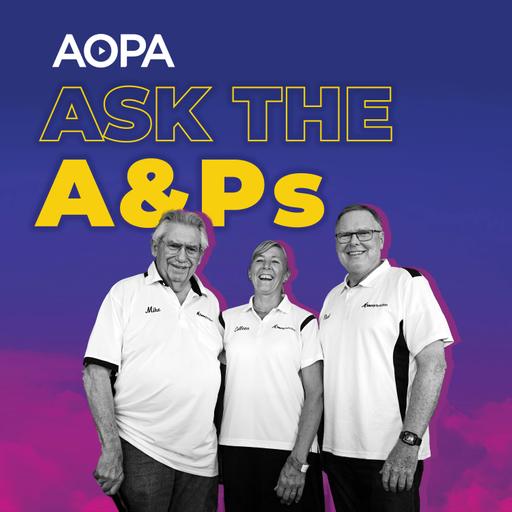
1 Aug 2025 12:13
"That'd be like putting grease on the road"
How to tell the difference between greases? Mike, Paul, and Collen break it down, plus high lean of peak temps, breaking in an engine on an experimental, and composite airframe cracks. Email [email protected] for a chance to be on the show. Join the world's largest aviation community at aopa.org/join Full episode notes below: Mark wants to make sure he’s clear on which grease to use for which application. The manuals call for specific greases, but there are allowances for those with equivalent specs. But Mark wonders how to determine
whether another grease is equivalent. Paul said you need to find the spec sheet for the grease the manufacturer recommends, and the spec sheet for the grease you’re thinking of using to make sure they more or less match. He also mentions Hartzell’s guidance that you can move up in grease numbers, but not down. Paul also cautions Cessna owners not to grease their flap tracks. They’re not meant to be greased, although the rollers are supposed to be lubricated. Grease Options March 24 2022, David Prizio, Kitplanes: https://www.kitplanes.com/grease-options/#:~:text=If%20your%20plane%20lives%20on,05%20and%20GN%2015%2C%20respectively For a full grease cross reference chart: EMTC https://emtc.aero/wp-content/uploads/2021/01/Mappe2.GREASE-XREF-1.pdf From the LPS product application guide: https://www.google.com/url?sa=t&source=web&rct=j&opi=89978449&url=https://pdf.directindustry.com/pdf/lps-laboratories/application-guide/11942-89226.html&ved=2ahUKEwjYgbmQiIiOAxVHHTQIHS21OzQQFnoECB4QAQ&usg=AOvVaw0KD4UOmbKMMo-0_4cGPymS Todd has a 2008 Cessna 400 that he just took delivery of. The airframe around the windscreen has a few little cracks that look like spider cracks. He’s read that there’s been an issue with this area and he’s wondering how much it matters. Paul said Todd is seeing cracks in the filler, and the expansion and contraction rate of it is different than the structure, which causes the cracks. Cessna apparently said back when it was built that they were working on a warranty repair for this area, but never did so. David is wondering how to break in a new engine on a new experimental airplane he’s building. He has the engine now pickled, waiting for the airplane to be finished. Colleen did some research and on the Van’s forum
someone posted a poll asking how people balanced engine break in. Some mentioned not doing the stalls on the initial flight, and they decided to prioritize the engine break in. Mike said high power ground runs are fine
during break in. Low power or long idling can glaze the cylinders. Jason is worried about his lean of peak temps on his B55 Baron. With the cowl flaps closed and a relatively warm day outside, he can’t keep one of his cylinders below 400 degrees. He’s done the Savvy flight test profile, and Savvy told him that the GAMI spread is acceptable and suggested checking the baffling. The first thing the hosts tell Jason to do is not compare the two engines. It’s irrelevant data. They focus on the baffling, even though Jason’s mechanic said it looks good. Paul said he’s seen cases where the baffling is wavy, which requires a slit be cut so that it lays flat and incoming air flow pushes it against the surface next to it (usually the cowling). After taking a deeper look, the hosts also suggest swapping probes to see what happens.
